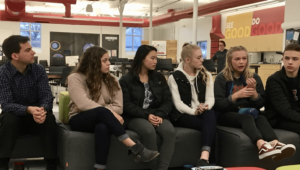Online Learning Growing Faster than Expected
A recent Ambient Insight report suggests that online learning is growing even faster than expected:
Over 4 million students are currently participating in some kind of formal virtual learning program. The number of virtual school children is at least 293,000 and there are an additional 217,000 students in cyber charter schools. The combined online population is currently growing by 46% a year and the growth rate is accelerating.
Michael Horn (most recently in The Rise of Blended Learning) and I have been predicting that learning at home (home education + virtual charters) would double and then plateau at a rate short of 10%.
Ambient suggests that, “A conservative forecast is that by 2015, over 4.5 million US children will be schooled at home.” That would be 8.2% and with cyber charter kids, Ambient forecasts that more than 10% of students will be learning at home by 2015.
Ambient Insight believes that over 75% of home educated children will be online (but not necessarily fulltime) by 2015.” I’ll bet an even higher percentage will be doing some learning online.
I think their growth rates beyond 2013 may be a little high, but I am revising my view that learning at home will plateau at or below 10%. With microschools, an extension of friends and family early learning and care, learning at home supported by full or part time online enrollment in an online school or at least significant use of informal online learning resources could approach 5 million students or 15% of the P-12 population early by 2020.
Here’s my revised forecast (millions of U.S. P-12 students):
2011 2015 2020
Home schooled 3.1 4.1 4.9
Cyber Charter 0.5 1.1 4.3
Blended Schools 0.5 2.3 13.4
Blended Charters 0.2 1.4 4.0
Supplemental 3.8 7.8 15.0
Students blending their own learning by through supplemental enrollment will continue to grow by almost 30% as more states expand access and may hit 15 million students by 2020.
The big question mark in this forecast is the growth of blended schools—mostly district schools adopting blended models. I’m projecting 50% growth rates for most of a decade, that may be optimistic, but it’s based on four factors:
1) most states will help orchestrate improved student Internet access to support a shift to online assessment and a shift to digital content.
2) higher expectations of real college and career ready standards
3) an extended “new normal” period of flat or shrinking resources
4) expanding student demand for learning options—both formal and informal
5) expanding number of states that support choice to the course and multiple providers






0 Comments
Leave a Comment
Your email address will not be published. All fields are required.